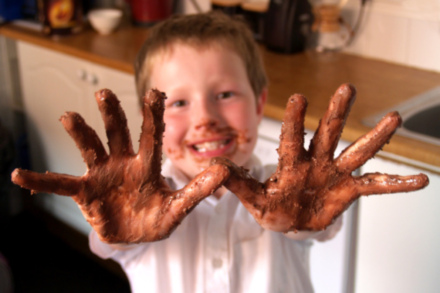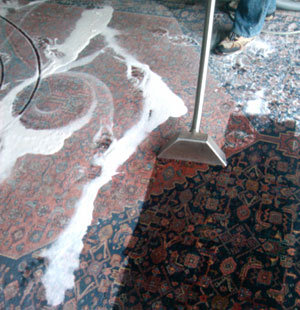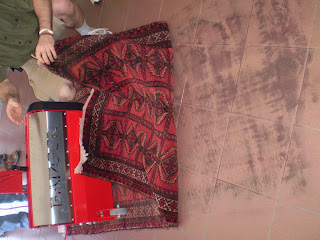Troubleshooting Common Carpet Issues
Information for Maintaining Carpet Appearance
TEXTURE SURFACE RETENTION
Carpet in heavily traveled areas receives the most wear. For better appearance and longer carpet life, try to reduce the amount of traffic on these areas or use small rugs in front of heavily used chairs or furniture. Remove and clean these rugs while vacuuming the primary carpet or rug. You should occasionally move furniture and reverse area rugs. Although some change will eventually occur in the texture of your carpet, reducing the wear on paths and in front of furniture will slow this change.
CRUSHING
Crushing is the loss of pile thickness because of foot traffic. Crushing is not considered a manufacturing defect unless it is specifically cited in the manufacturer’s warranty. Regular vacuuming may help reduce crushing that results from traffic. Manufacturers’ definitions of crushing may vary.
DEPRESSIONS OR INDENTATIONS
The weight of heavy pieces of furniture can cause indentations in carpet. Some depressions may be permanent. Use furniture glides or cups under the legs of heavy pieces, or move your furniture a few inches backward or sideways so that the weight is not concentrated in one place. To remedy depressions, work the carpet pile back into place with your fingertips or the edge of a spoon, then, dampen the area and heat it with a hair dryer, working the fibers with your fingers or a spoon.
FADING OR COLOR LOSS
Give your carpet the normal protection from direct sunlight that you would give to any colored fabric. Emissions from heating systems or chemicals, such as pesticides, household cleaning agents and other household items, can also result in color loss.
FILTRATION SOIL
Filtration soil may appear as dark or grayish lines on carpet along walls, stairways and under doors. It is caused by airflow over and through carpet, allowing fine soils to settle on the surface. It is often caused by an improperly balanced ventilation system, when the volume of air entering a room exceeds the system’s capacity to remove air from the room. Excess air then seeks exit sources in gaps along walls and stairways. Prevent the airflow through carpet and carpet edges by sealing openings through the carpet and under doors and baseboards. Keeping the air in the area clean and using good filtration in your heating and cooling systems and vacuum cleaners can help. Filtration soils may require special cleaning treatment for effective removal. Contact a carpet-cleaning professional for assistance.
FLUFFING AND SHEDDING
The balls of fluff, or loose fibers, found on carpet or in the vacuum cleaner bag are the normal result of fiber left in the carpet from the manufacturing process. Removing these loose fibers does not affect carpet life or appearance. Because of their large size, these fibers are too big to become airborne or to be breathed in. With proper vacuuming and using a quality vacuum cleaner, most shedding gradually disappears within the first year after installation.
MATTING
Manufacturers’ definitions of matting may vary. Matting is usually the result of the untwisting of the yarn and the intermingling of the yarn tips through foot traffic. Matting may be caused by various factors, including an improperly specified cushion, cushion failure, or improper maintenance. Matting is not considered a manufacturing defect unless it is specifically cited in the manufacturer’s warranty.
MOTH, BEETLE AND FLEA CONTROL
Most wool and wool-blend carpet made in the United States is permanently treated to prevent moth damage. Carpet and rugs of manufactured (synthetic) fibers are naturally resistant to insects, because such fibers are not a food source and are resistant to beetles, commonly called carpet beetles. However, beetles already in the home may lay eggs in the carpet pile and hatch in 8 to 15 days. Pet owners also may find fleas on their carpet. Fleas will not damage the carpet and will die there, unless they find another animal to sustain them. Frequent vacuuming aids in the control of fleas on carpet; just be sure to change the vacuum bag often. For assistance in removing beetles or other insects, contact a professional pest control specialist.
ODOR
During and immediately following the installation of your new carpet, there may be a slight odor, which may result from the removal of your old carpet and cushion or from the new carpet, cushion, adhesives or seaming tape. Ventilation with fresh air is recommended. Ideally, windows and doors should be opened, and the HVAC system should be operated at maximum capacity for 48 to 72 hours.
SOILING
Maintain the beauty of your carpet by cleaning it regularly before it becomes excessively soiled. Dirty, airborne particles may be deposited on carpet, causing dulling. Dulling is caused by the deposits of all types of soil. For example, a delicate rose color may gradually become a neutral taupe because of soil, while light blue may take on a dull, gray-green hue. Red clay soil also can cause a pronounced change in some colors. In spite of such phenomena, the original color of a carpet is not lost; it is still present under the soil. Oily soil may be very difficult to remove after it has been on the carpet for a long time, and it may be actually absorbed into the fiber, causing the carpet to have a yellow cast. Frequent cleanings are important to avoid this problem. Entry mats at doorways trap soil, and combined with routine cleaning and vacuuming, provide extra protection for all floor coverings.
SPROUTING
Occasionally, a yarn tuft will rise above the pile surface of a carpet. Just snip off these tufts to the level of the other tufts. DO NOT PULL THEM OUT. If this problem persists in a localized area, contact your flooring contractor or manufacturer’s representative.
STAIN-RESISTANT CARPET
Almost all carpet manufactured today has finishes that make it more stain- and soil-resistant, but no carpet is entirely stainproof. It still requires care. Remove spots and spills promptly. If spills or soils are allowed to remain, they may become permanent. Call the phone number normally found on the carpet warranty to obtain specific information about cleaning the carpet.
TOPICAL TREATMENTS
Topical treatments include soil retardants, stain repellents, anti-static treatments and deodorizers. The use of after-market, topical treatments without the express approval of the carpet manufacturer prior to application may void applicable warranties.
WEAR
Most carpet manufacturers offer “wear” warranties of various time lengths. According to these warranties, “wear” is defined as the loss of pile weight or pile fiber (usually 10 percent) due to abrasive loss of fiber by weight. What appears to be wear, or pile fiber loss, may actually be matting, crushing or permanent fiber damage caused by soiling rather than loss of fiber. There is seldom actual loss of pile fiber. (See also Matting, Crushing.)
WRINKLES, RIPPLES AND BUCKLES
Wrinkles, ripples and buckles in carpet are most often caused by a failure to stretch the carpet correctly using a power stretcher, the use of an incorrect or failed cushion, or excessive temperature and/or humidity. Ripples can be caused by a combination of any of the above. If ripples or buckles develop, consult your carpet retailer. Generally, the problem can be corrected by a qualified carpet installer who re-installs the carpet with a power stretcher.


























